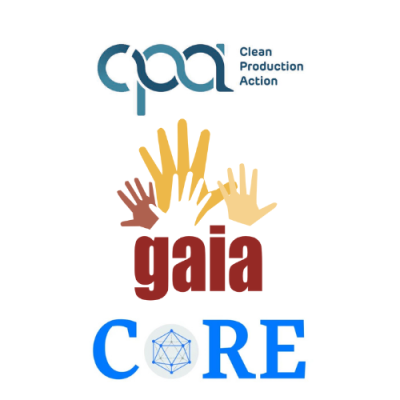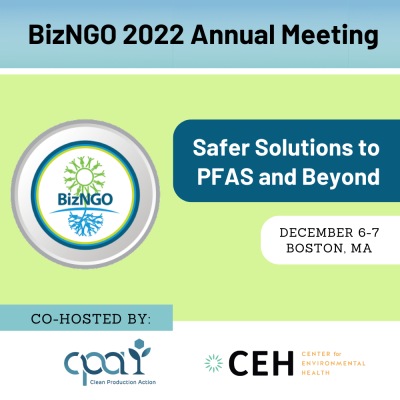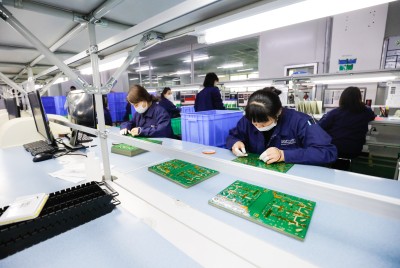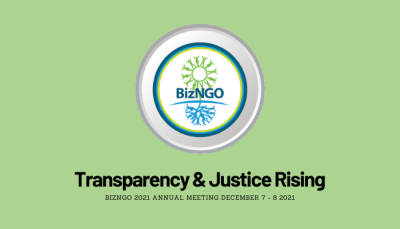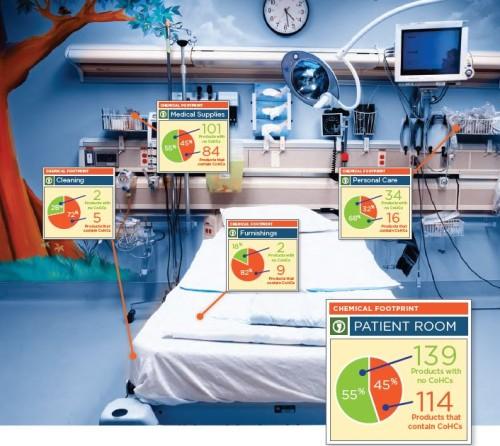As battery innovation for electric vehicles progresses, it's crucial to avoid regrettable substitutions—simply replacing one harmful chemical or material with another. Watch the first webinar in a new series co-hosted by the Collaboratory for a Regenerative Economy (CORE) and the Global Alliance for Incinerator Alternatives (GAIA). This series brings together interdisciplinary stakeholders to explore how accelerating battery design decision-making processes—from the… …
After 21 years at Clean Production Action, Mark is stepping down from his role as Executive Director. Join us for drinks and hor d'oeuvres and help us celebrate Mark's next chapter! Please register below. And consider joining us for our 19th Annual BizNGO Annual Meeting, on Wednesday and Thursday, December 4 & 5, at The Nonprofit Center, 89 South Street, Boston, MA, from 9-5 pm. Agenda, registration and details. Clean Production Action is a 501(c)(3)… …
Setting Bold Chemical Footprint Goals
Outcomes Chemical Footprint: defined chemicals of high concern and learned how to set goals and measure progress in chemical footprint reductions. Environmental Justice (EJ): gained skills on how to integrate EJ into business policies and practices, and how to identify chemicals of concern and safer solutions to vulnerable populations. Chemicals & International Frameworks: learned how to participate in and address chemicals in the United Nations Plastics Treaty, Biodiversity Convention, and… …
CPA and CEH join forces to host BizNGO 2022
Clean Production Action (CPA) welcomes the Center for Environmental Health (CEH) as a co-host of BizNGO’s 17th Annual Meeting on December 6-7, 2022. Together, our two organizations hosted the annual meeting and solicit sponsorships. Our goal is to build on the strengths of our respective organizations to increase the impacts of BizNGO and scale the movement to safer chemicals and products. Click Here to View Highlights from the Meeting pBizNGO is a trusted forum for open and honest… …
Hear from Kaiser Permanente, NewGenSurgical, and Clean Production Action about the first-ever GreenScreen Certified® Standard for the health care sector, a new tool to enable hospital purchasers to screen out common equipment and supplies containing harmful chemicals. View the recording of this webinar to learn about: the certification criteria and how they were developed, the value of the certification to manufacturers and purchasers, and how you can get involved …
Hear from Clean Production Action, Kaiser Permanente, Maharam, and Glen Raven on the newly updated GreenScreen Certified® Standard for Furniture & Fabrics. Here you will learn what GreenScreen Certified® is and how it can be used by manufacturers and purchasers to meet sustainability goals! Join us to hear from manufacturers with certified products, especially PFAS-free fabrics, about the benefits of certification and the GreenScreen process. Facilitator: Mark Rossi, Clean Production… …
Clean Production Action, Apple, Clean Electronics Production Network, and TCO Development present on safer cleaners and degreasers in the electronics sector. Learn the details of GreenScreen Certified for Cleaners & Degreasers. Hear how Apple is integrating green chemistry into its supply chains. Find out how CEPN is scaling safer chemicals in the manufacturing of electronics. Learn how CPA and TCO Development collaborated on TCO Certified Accepted Substances List and the… …
DECEMBER 6
UC Berkeley Poster Session (December 6th at 5:00-6:30pm EST) Not just an academic exercise: Berkeley students collaborating with industry, NGOs and government to develop Greener Solutions Join us to learn about four exciting research projects to identify safer solutions to hazardous chemicals: 1. “Alternatives to polyethylene vacuum packaging for frozen foods” Partner: Noble Ocean Farms 2. “Compostable adhesives for produce PLU stickers (to… …
Clean Production Action (CPA) and the Interstate Chemicals Clearinghouse (IC2) hosted a discussion on July 14th at 3:00-4:00pm EDT of the just released Principles for Chemical Ingredient Disclosure.
Over 100 businesses, governments, health care organizations, investors, and non-governmental organizations have endorsed the six Principles. Learn: What are the Principles for Chemical Ingredient Disclosure. Why organizations developed and endorsed the Principles. The need for and value diverse stakeholders see in chemical transparency. How organizations foresee using the Principles. How you can support chemical transparency. Joining Terri Goldberg of IC2 and Mark Rossi of CPA on the webinar… …



